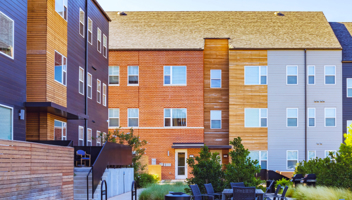The Scottish Government has issued the latest piece of the jigsaw in its plans to improve building safety in high risk buildings - and it’s a big piece.
It is a consultation document: “Building regulations – compliance and enforcement”. The consultation closes on 4 February 2022 so now is the time for the industry to have its say.
Context matters
The plan in Scotland is to focus on “reshaping” the existing building standards system rather than fundamentally changing it. This is because prior reports have concluded that the current system in Scotland has much to commend it, in particular the pre-emptive aspect of obtaining a building warrant prior to starting on site.
Despite this, the consultation notes that there are issues that need to be addressed, particularly in relation to how effectively the system is actually implemented. This is especially critical during the construction phase to ensure works are completed as intended in compliance with the design and approved building warrant.
Reshaping the system - significantly
The proposals cover four areas.
1. The creation of a new Compliance Plan Manager (CPM) role on High Risk Building types (HRBs) on behalf of the Relevant Person (normally the owner or developer).
- The CPM would be appointed by the Relevant Person at the design stage, no later than the design team appointment.
- The CPM’s role would be to work collaboratively with the designer and, where appropriate, the contractor, to develop a Compliance Plan (CP) for approval with the building warrant plans.
- The CPM would oversee and be responsible for ensuring the developed and agreed CP is fully discharged from building warrant pre-application discussion stage through to completion.
- A list of the CPM’s proposed duties is contained in Annex B to the consultation.
2. The definition of High Risk Buildings requiring a CPM.
The scope of HRBs is obviously critical. The consultation asks for responses on building types including:
- domestic buildings or residential buildings with any storey at a height of more than 11 metres above the ground;
- educational establishments (schools, colleges and universities), community/sport centres and non-domestic buildings under local authority control/where they have an interest in a building;
- hospitals and residential care buildings; and
- housing sites (low-rise).
3. Fines and penalties
The current penalty for a person found guilty of an offence on summary conviction is a fine not exceeding level 5 on the standard scale (£5,000).
Views are sought on the principle of introducing a new enforcement power for local authorities to take action post completion certificate acceptance. Views are also sought on what level of fines should be applied and specifically the level of fine appropriate for HRBs.
4. Impact assessments
One of the questions asked is whether the policies proposed in the consultation would lead to increased costs and/or impact on resources for businesses.
The bigger picture
Those who operate UK wide will need to understand, manage and resource the different reform regimes being proposed in each jurisdiction. While the objectives and concepts of each regime may be similar, the details are not.
In England, the extensive Building Safety Bill continues its way through the UK Parliament. The Bill primarily applies to England and Wales but it is worth noting that parts of it also apply to Scotland and Northern Ireland. There is a helpful jurisdictional table in Annex A of the explanatory notes to the Bill. Read more in: Building safety reform: different route maps for England and Scotland.
In Wales, the latest development is the publication, on 14 December 2021, of the summary of responses to its building safety consultation. This is a document which, once again, highlights the differences in the detail of the new regimes.
Fitting the pieces together
Covid has forced me, rather reluctantly, to rediscover jigsaws. Fitting together the pieces of the new building safety regimes across the UK could be the most difficult jigsaw of all.
You can have your say on this latest piece here.
Related Blogs:
Building safety reform: different route maps for England and Scotland (September 2021)
Building Safety: who pays in Scotland? (October 2021)
Related News, Insights & Events

Performance security part three: Retentions
The most widely utilised form of performance security, being retentions and some recent measures introduced in the UK to encourage transparency in retention practices in the construction industry.

Building Safety Levy (Scotland) Bill introduced
Introduced on 5 June 2025, the Building Safety Levy (Scotland) Bill proposes a new tax which, if passed, will be known as the Scottish Building Safety Levy ("the Levy").

Burness Paull reinforces energy team with appointment of leading renewables lawyer
03/06/2025
Burness Paull has appointed highly regarded renewables development lawyer Nicola Scott as a partner in its energy team.




